Saturday 29 September 2012, Phonsavan, Xiangkhouang, Laos
Legend has it that the plains of central Laos were once ruled by a tyrant called Chao Angka. His barbaric governance held his subjects in fear and misery, but none could oppose his powerful army, and the merest whiff of insurrection would be met with terrible punishments. Yet there was only so much suffering his people could take. Driven by desperation, some fled and risked their lives to seek assistance abroad. A few made it beyond the borders, but were captured and hauled before Khun Jeuam, the powerful king who ruled the lands of the north. He listened as they trembling relayed their treasonous case for the deposition of their king; and Khun Jeuam thought awhile, for he was a just man. After a long silence he rose to his feet. He took up his spear, marshalled his army and marched them chanting south.
The two great armies collided on the plains: Khun Jeuam leading the charge into battle; Chao Angka raging furiously at the oncoming invaders. The battle was long and violent, but finally the defending army were routed and Chao Angka, the tyrant of the plains, fell lifeless and bloody to the ground.
A roar of elation went up. Khun Jeuam was victorious! The people were free! This called for a celebration like nothing seen before. This called for a megalithic piss up! They wasted no time, promptly firing hundreds of stone jars large enough to carry gallons of rice wine. These pots were huge, with many standing taller than a man.
It makes you wonder if these really were men at all. Their stone jars are so massive that surely only a giant could lift them. So perhaps instead we should imagine an army of giants, drunk on victory and gargantuan quantities of booze, rolling about on the plains, kicking their feet and singing songs to the sky in triumph. They must have had a suitably giant hangover the next day too, because nobody cleaned up and the aftermath is still spread over an area of 5,500 square kilometres. It is called the Plain of Jars.
Our stay in the central plains was low key in comparison. After our night with the Lao shopkeeper and his family, we rolled down out of the hills to the region’s capital, Phonsavan. We found the town basking in a wide cropped plain at a confluence of roads flowing in from the south, east and west. After so long riding through thatch and bamboo villages, the pillared balconies and solid construction of the houses gave the town a striking sense of permanence. We rode down the dust-blown boulevard until we reached a proliferation of restaurants and guesthouses—a proper tourist district, the first we’d seen in weeks. After days of eating noodles and rat meat and not being sure where we’d sleep each night, I’m sure you can imagine the excitement we felt about a few days of good food and a guaranteed bed.
 |
| On the road to Phonsavan |
We were scrupulously restful, lounging around for days as we caught up with sleep, calories and the blog. Then early one morning we wheeled our bikes unloaded out of our room and pedalled towards the low grassy hills behind the town. We locked the bikes up and continued on foot, and then ahead of us as we climbed we saw dozens of enormous stone jars rising into view.
 |
| Phonsavan |
They really are huge. They’re rounded like barrels and beaten out of tonne-lumps of granite, the largest standing ten feet tall. There are also hundreds of them, spread like autumn seeds across the hills and tapering away over the horizon. We approached the nearest cluster and peered inside. Their original contents are lost and their hollow interiors are now filled with plant-life or rainwater, transforming them into little capsule kingdoms for frogs, spiders and lizards. We ambled from cluster to cluster in the hazy morning sun, cresting hills to find new swathes of grass speckled with more giant jars. Confronted by a spectacle on such a scale, we couldn’t help but wonder why anybody had gone to the trouble of making them. The legend of Chao Angka is good, and like so many folktales I suspect it has some basis in reality (probably one in which Khun Jeuam is no more kind and just than the last king, but victorious nonetheless), but sadly it’s unlikely these pots were ever used to store wine for a victory party.
Drawn by the mystery and hoping to find some answers, a French archaeologist called Madeleine Colani arrived in the region back in the 1920s. She was a curious lady, dressing all in black and bringing her younger sister with her to serve as a much-suffering assistant. Together they set out along dilapidated tracks into monsoon jungle, sleeping beneath banana leaves and venturing into subterranean caverns—Madeleine apparently once lowering her sister down into the darkness on a rope and refusing to pull her back out again until she found something interesting. The pair spent years gathering evidence from ashes and bone fragments and finally proposed the now generally-accepted theory that these mighty jars were built to hold the mortal remains of the chieftains who once controlled the salt route that ran through the area around two thousand years ago. They are funerary pots. Traces of this history still inhabit the folklore of Muang Phukoot district, where it is believed that to disturb the jars is to risk disturbing the ancient spirits that sleep inside.
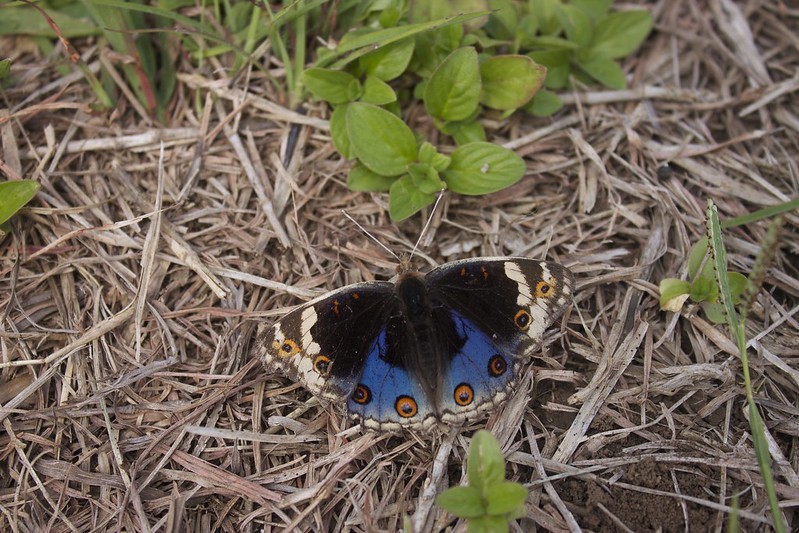 |
| A butterfly that was fluttering around the jars. |
As we wandered between the jars that day, the restlessness of Laos’ more recent history was also apparent. Deep, half-sphere craters were blown out of the hills, and there was a boundary of red and white markers all around to indicate which areas had yet to be cleared of explosives. A strategic junction thousands of years ago, the Plain of Jars remained so in the 1960s as the forces of the Second Indochina War boiled up out of Vietnam and Laos.
Following the Second World War, communism exploded around South East Asia in opposition to the lingering stench of colonial rule. By 1954 the Anti-French Resistance in Vietnam had driven their old masters out, fast-tracking French-ruled Laos’ to independence.
Laos was undecided about its future. Three paths lay before it: left to communism, right to maintain its monarchy, and a vague trail of middle-ground neutrality somewhere between. In a bid to balance these conflicting pressures, the last King of Laos, Sisavang Vatthana, named three princes rulers of a new coalition government. Each fiercely believed in one of these paths and it was hoped that together they might steer Laos through the troubles ahead.
And there were troubles. As France withdrew from Vietnam in 1954, America tagged in to pick up the war against the communists in the north. Twenty years of gruelling conflict were still to come, on top of the ten already endured between the French and Viet Minh. The Viet Minh had already spilled into Laos and were occupying significant areas of land to secure their supply lines to South Vietnam. A maelstrom was converging on South East Asia, and Laos was desperate to keep out of its way.
 |
| Hard to see here, but that brownish patch in the middle of the photo is a bomb crater |
In many ways it is not surprising that the 1962 International Agreement on the Neutrality of Laos was a failure. The North Vietnamese depended on their Laos-side supply lines for their war against the Americans. They also saw an ally in the Pathet Laos, and became increasingly active in supporting and directing these Laotian communists. America for its part could not sit back knowing that the Viet Minh were sneaking down the wings of the conflict zone, but they could not engage in open war there due to Laos’ neutrality. So the CIA enlisted the help of a Laotian General called Vang Pao, a man of influence in the Hmong tribes who inhabited the crucial area in the north. In the early 1960s Vang Pao hiked from village to village to gather an army to fight the communist forces. This “Secret Army” was financed by the CIA, and supported by US air drops and reconnaissance. As the conflict intensified these aerial support missions would evolve into the cataclysmic bombing runs that would contaminate Laos with unexploded munitions and wreck or end the lives of over 50,000 civilians in the decades to come.
The ground war for Laos was largely played out on the Plain of Jars. For a decade, it was here that Vang Pao’s forces dug in and fought the encroaching communists. Each year they were overwhelmed and beaten back; but then the rains came and washed the trails away, throttling the communists’ supply lines, so Vang Pao and his Hmong Secret Army could charge in again, retake the plains and dig in for the next spin of the wheel.
With the popularity of the Vietnam war waning in the US and the press getting wind of its involvement in this clandestine war in neutral Laos, by 1973 the US was making for the door. Vang Pao’s aerial support dwindled, so too did his army, suffering unsustainable losses on the battlefield. In 1975 the Plain of Jars fell to the communists for the last time, sending the Hmong people scattering for their lives. In June of that year the Pathet Lao marched into the royal capital of Luang Prabang and by December they held Vientiane. 600 years of monarchy in Laos was ended on 2 December 1975. Sisavang Vatthana, the last king of Laos, was sent to an internment camp where he died in unknown circumstances sometime between 1978 and 1984.
The Hmong people were now trapped in a country ruled by the army they had spent a decade fighting. Some, including Vang Pao, were able to escape before the Pathet Laos could close off the borders and airfields, but thousands were left stranded with their new rulers bent on hunting them down. Facing death squads and napalm strikes, many fled into Laos’ forested mountains where they hunkered down and prayed that their US allies would return to save them.
Thirty years later, in 2006, 400 Hmong veterans and their families emerged from the mountains. They had spent three decades living like hunted animals, but they could stand it no longer. They were promptly arrested and they have never been heard of again. It’s thought there may be many more Hmong still hiding out in these mountains, possibly thousands, trapped in the hills with nowhere to turn. While across the towns of Laos each year, the celebrations of the communist victory go on, with fanfare, fireworks and plenty of rice wine.
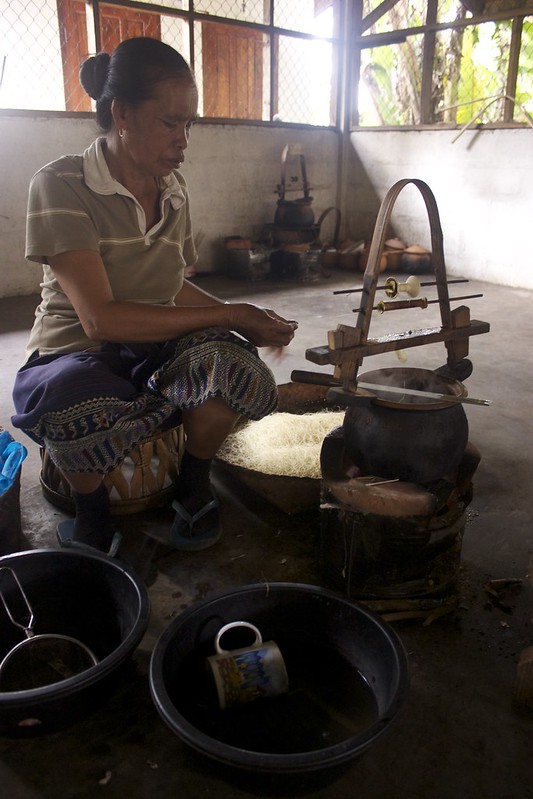 The people of Laos carry their history lightly. Travelling through the country it’s easy to miss the signs of the old horrors amid the stream of smiling faces. There’s a quiet determination to get on with life here. In the tourist district of Phonasavan, empty bombshells are welded together to make cafes, while up by the jars we were offered cutlery and necklaces fashioned out of shrapnel. On the edge of town, Mulberries Silk Farm has established a sustainable silk industry: rearing silk worms, growing mulberry trees to feed them, and training local people to work the looms.
The people of Laos carry their history lightly. Travelling through the country it’s easy to miss the signs of the old horrors amid the stream of smiling faces. There’s a quiet determination to get on with life here. In the tourist district of Phonasavan, empty bombshells are welded together to make cafes, while up by the jars we were offered cutlery and necklaces fashioned out of shrapnel. On the edge of town, Mulberries Silk Farm has established a sustainable silk industry: rearing silk worms, growing mulberry trees to feed them, and training local people to work the looms.
Laos gets on with things with great dignity and warmth, despite having every reason to rail at the players and circumstances that conspired against them only a few decades ago. It puts the challenges of our rather contrived adventure very firmly in their place. That night, however, I was feeling a little less stoic about our challenges. A dose of mild food poisoning left me crumpled round the toilet with my head against the porcelain, so we were forced to take another day off so that I could recover. Ahead of us were some of the biggest hills of the trip as our road cut west towards the old royal capital of Luang Prabang.
* * * * *
 |
| Leaving Phonsavan |
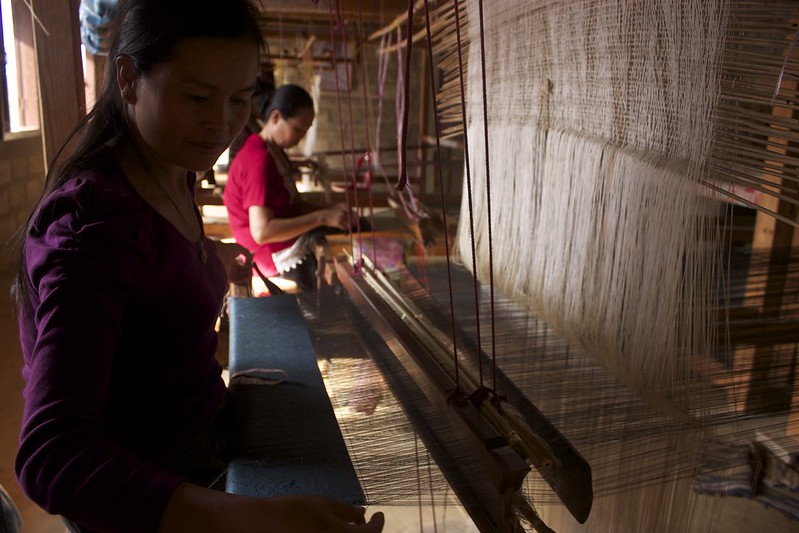 |
| Working the looms at Mulberries Silk Farm |
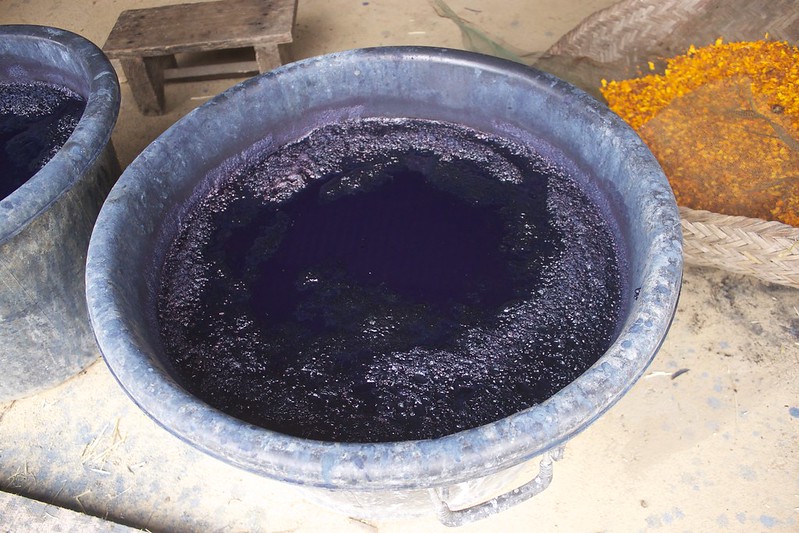 |
| A barrel of night: indigo dye from Mulberries silk farm |
 |
| Working conditions for the silk moths are poor. |
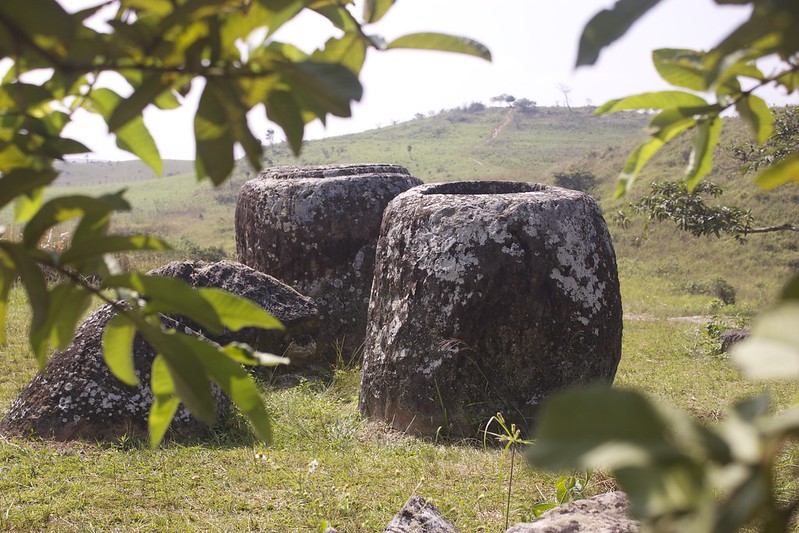

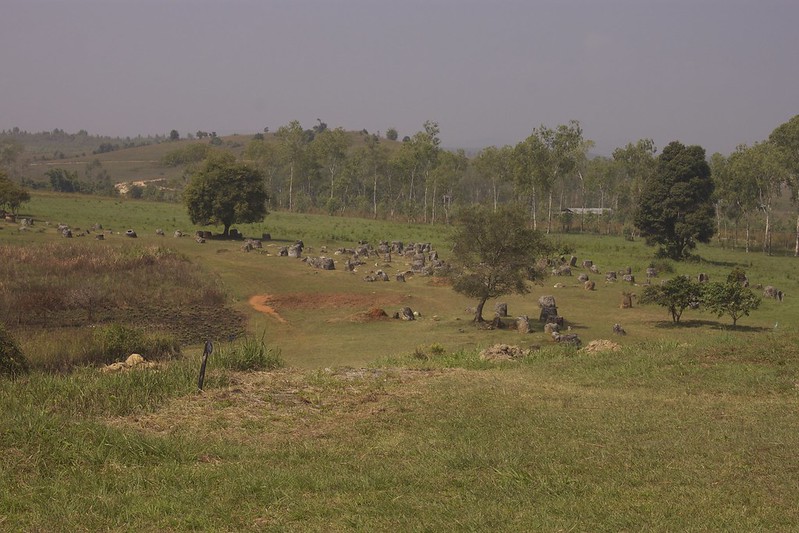
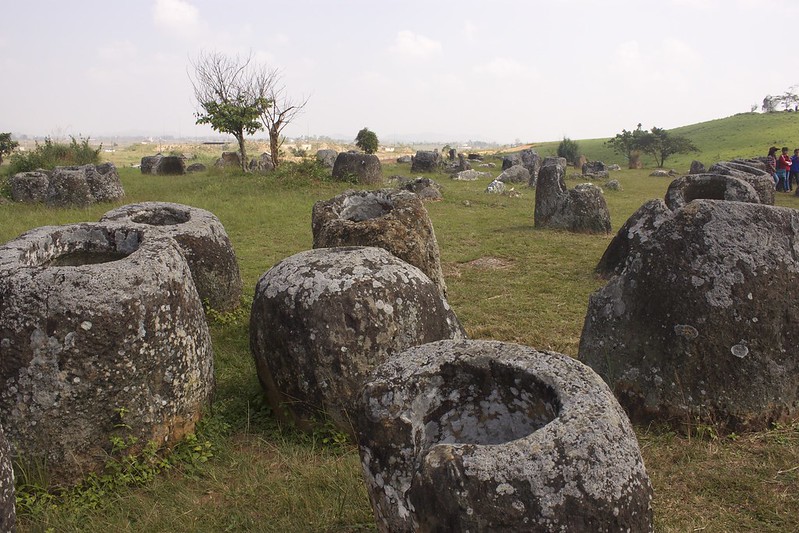
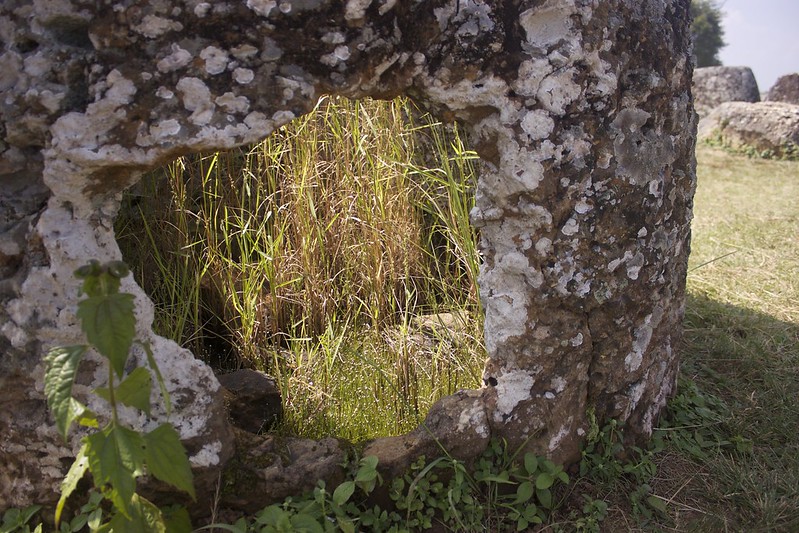

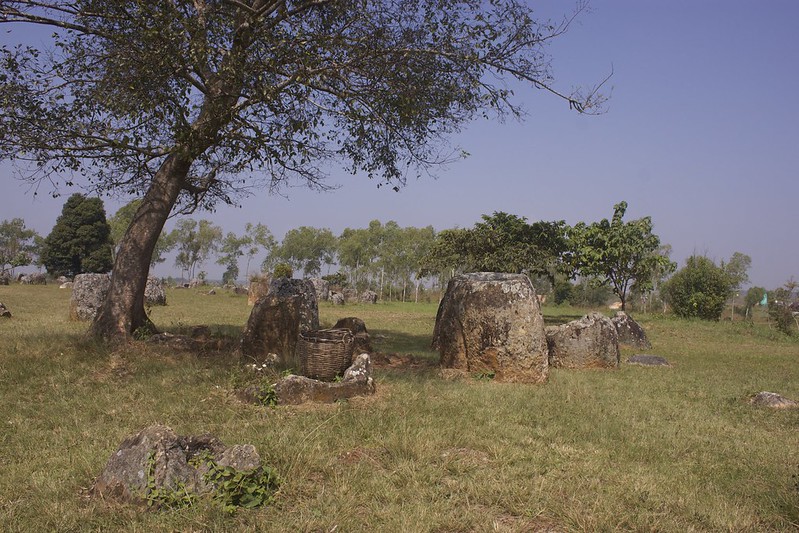
In Oz, I watched a doco on the Laos War and a few pilots mentioned they worked for Air America, but unbeknown to them, Air America was owned by the CIA. Eventually they worked out the connection when they were shipping weapons into the air base which was the busiest base in Asia at the time, access is restricted to this day. Sometimes you see movies mentioned Air America, I never knew who they were until watching the doco. http://en.wikipedia.org/wiki/Air_America_%28film%29
ReplyDeleteYeah, there was shady business going on there. Same with any conflict I suppose. The guardian have been running a few pieces about the Vietnam war lately. I thought this one, that looks at the story that was cooked up at the time, was particularly interesting: http://www.theguardian.com/news/2015/apr/22/vietnam-40-years-on-how-communist-victory-gave-way-to-capitalist-corruption
DeleteThanks for posting.